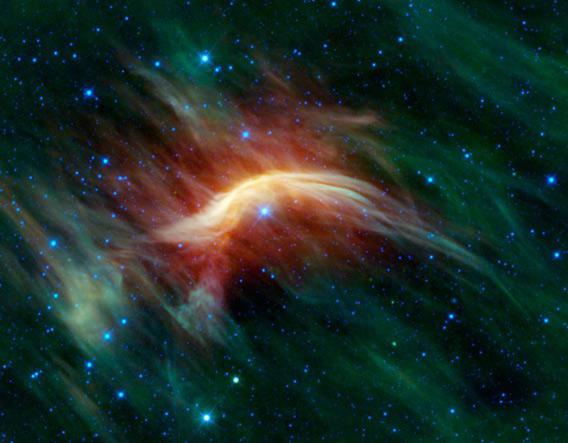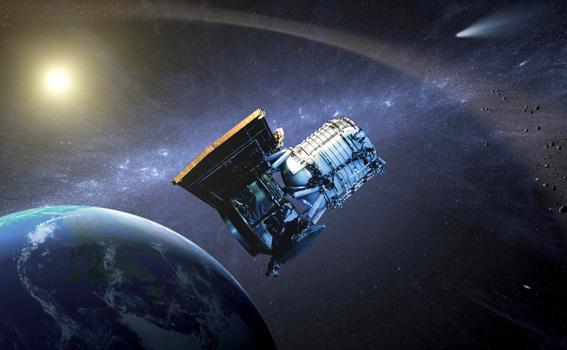I have some great news about NASA: Next month they will be reactivating the Wide-field Infrared Survey Explorer, or WISE! This observatory orbits the Earth and sees in the far-infrared, well outside what our eyes can detect. This is the domain where cooler objects in space emit light: dust clouds, planets, and asteroids.
WISE was launched in late 2009 and spent 13 months surveying the sky. Since it looks at what we call “thermal infrared” light, its cameras had to be cooled to keep from interfering with the observations—you don’t want to have your own telescope glowing brightly! It ran out of coolant in 2011 (as was expected) and was put into hibernation.
And now it gets a second chance at life. And what a chance: NASA has approved an extended three-year mission for WISE. The goal is to map out potentially hazardous near-Earth asteroids—that is, space rocks that can hit us—something that was part of its mission when it was still active. Two of its four cameras can operate without coolant, and they should be sufficient to do the job.

Photo by NASA/JPL-Caltech/UCLA
My pal and astronomer Amy Mainzer is the principal investigator for NEOWISE, the Near-Earth Object part of the WISE mission. I’m glad for her, because this means she’s gainfully employed for another three years, but also because she’s working on NEOCAM, a follow-up mission that will leverage what was learned from WISE to build a next-generation asteroid hunter.
WISE is good at looking for asteroids because of a quirk of nature. Asteroids are dark in visible light, and difficult to detect. But sitting out there in the sunlight causes them to warm up, where they glow in the far IR. WISE is pretty good at seeing these rocks, even though they may be too faint to see with visible-light telescopes. Also, it looks at wide chunks of the sky at one time, allowing it to find more of these objects and make a survey of them. While the mission was active, WISE found 135 NEOs, another 34,000 asteroids between Mars and Jupiter (in what’s called the Main Belt), and all in all saw nearly 160,000 of the 600,000 known rocks in the solar system (millions more remain as yet unseen)—including the very first Earth Trojan asteroid, a rock that shares Earth’s orbit.
In this extended three-year mission, it’s expected to find 150 more asteroids that can approach the Earth. But it’ll do more, too. One thing that’s hard to do is determine how big an asteroid is; you have to know its distance, how bright it appears, and how reflective it is. Seen from the same distance, a shiny rock will be brighter than a dark one. That reflectivity is called the albedo, and it’s hard to measure in visible light. But in infrared it’s far easier, so in its extended mission WISE will be able to determine the sizes of something like 2,000 more asteroids. That’s impressive.

Photo by NASA/JPL-Caltech/UCLA
So overall I’m pretty happy with this. The only downside to me is that this is being done in conjunction with NASA’s plans to go to and capture a small asteroid, and I am by no means confident that plan will get long-term (or any) funding by Congress. I’d hate to think WISE was a political pawn in this game of trying to get funding. [Update (Aug. 22, 2013 at 22:00 UTC): The day after NASA announced this resurrection of WISE, they released new pictures and animations for the asteroid retrieval mission.] WISE deserves to get extended; it was a highly successful mission, doing great work for a relatively small amount of money, and the idea of bringing it back to life to hunt for more asteroids—especially as a stepping stone to even better space rock hounds—is well worth it on its own merits.
So while I keep a jaundiced eye on the politics, I’m very pleased that WISE will get a chance see more photons. It’s always bittersweet when a mission is shut down, so it’s a reason to celebrate when one gets switched back on. My congratulations to the WISE team!
Now go find some rocks.
